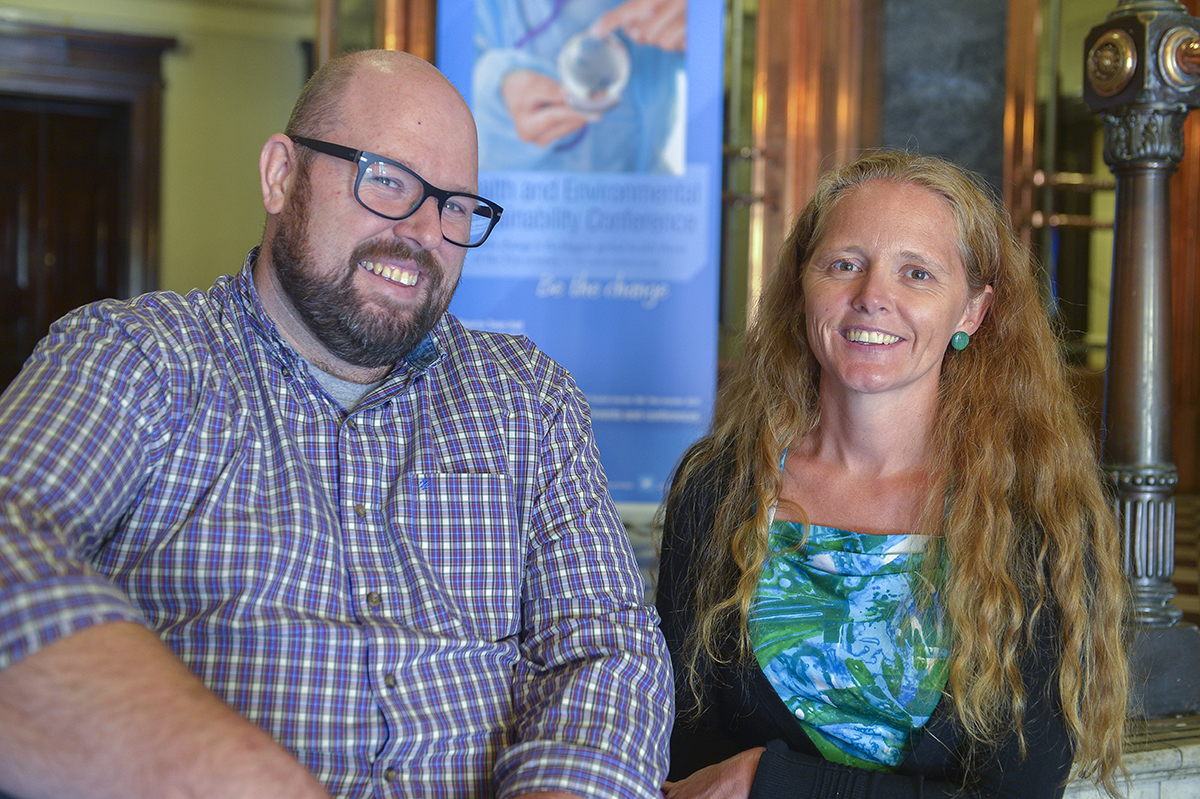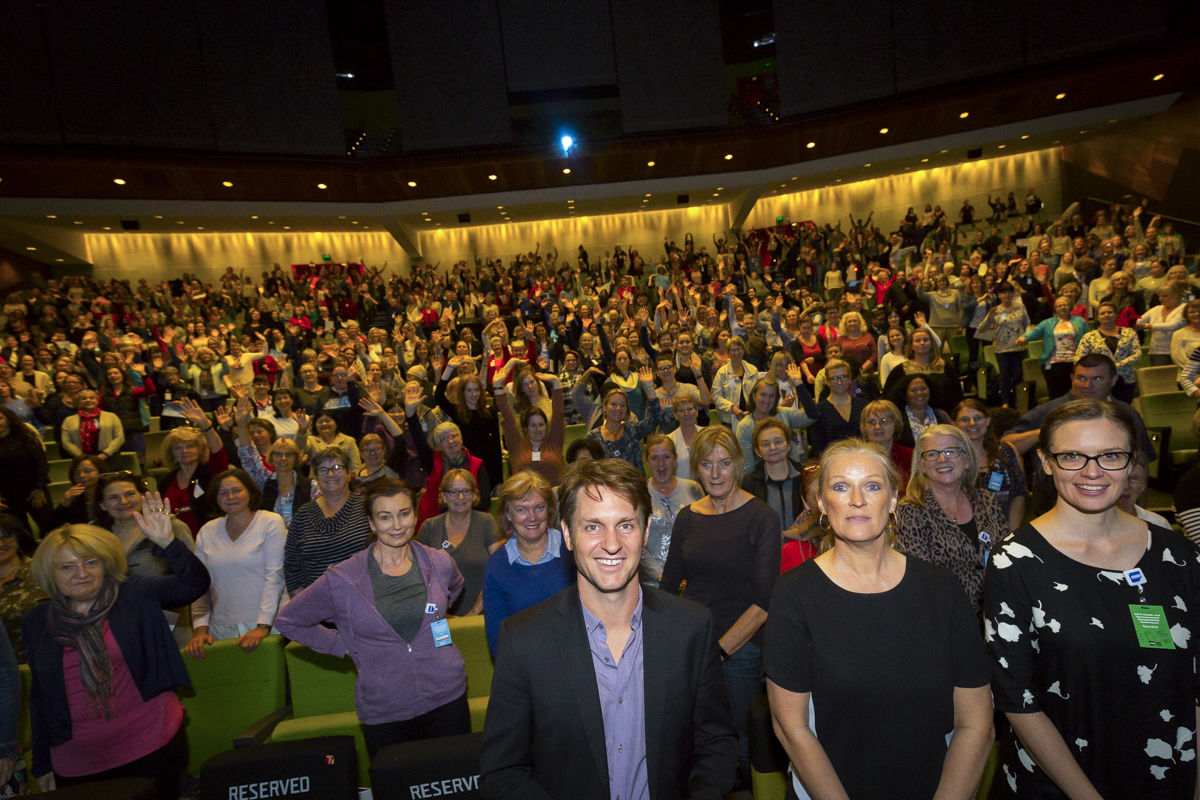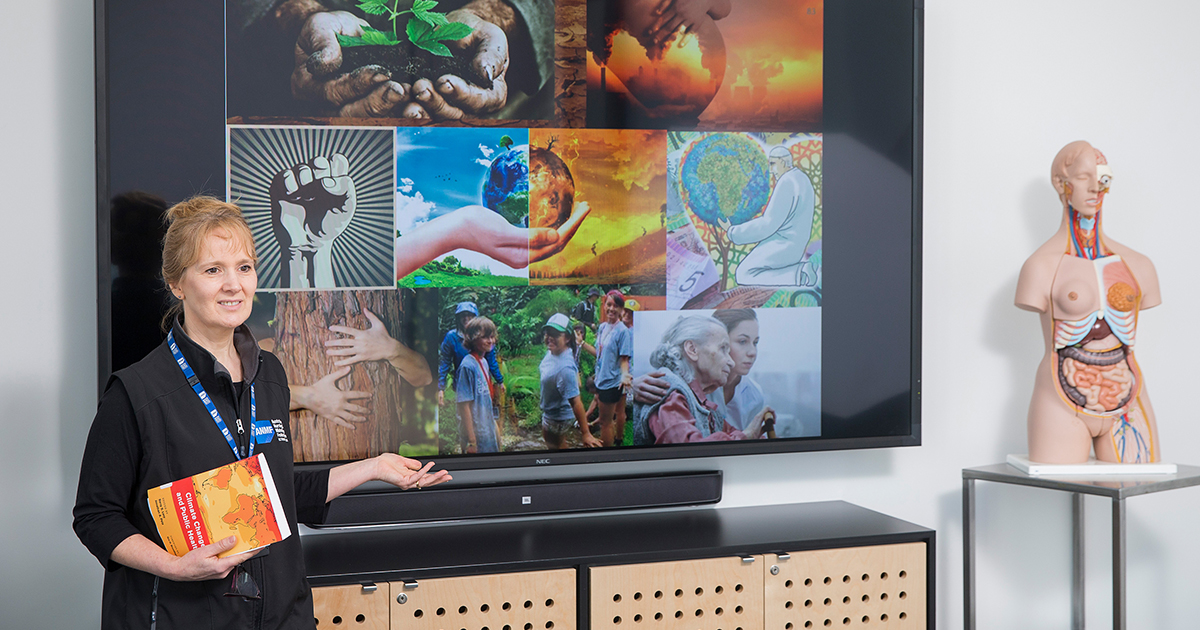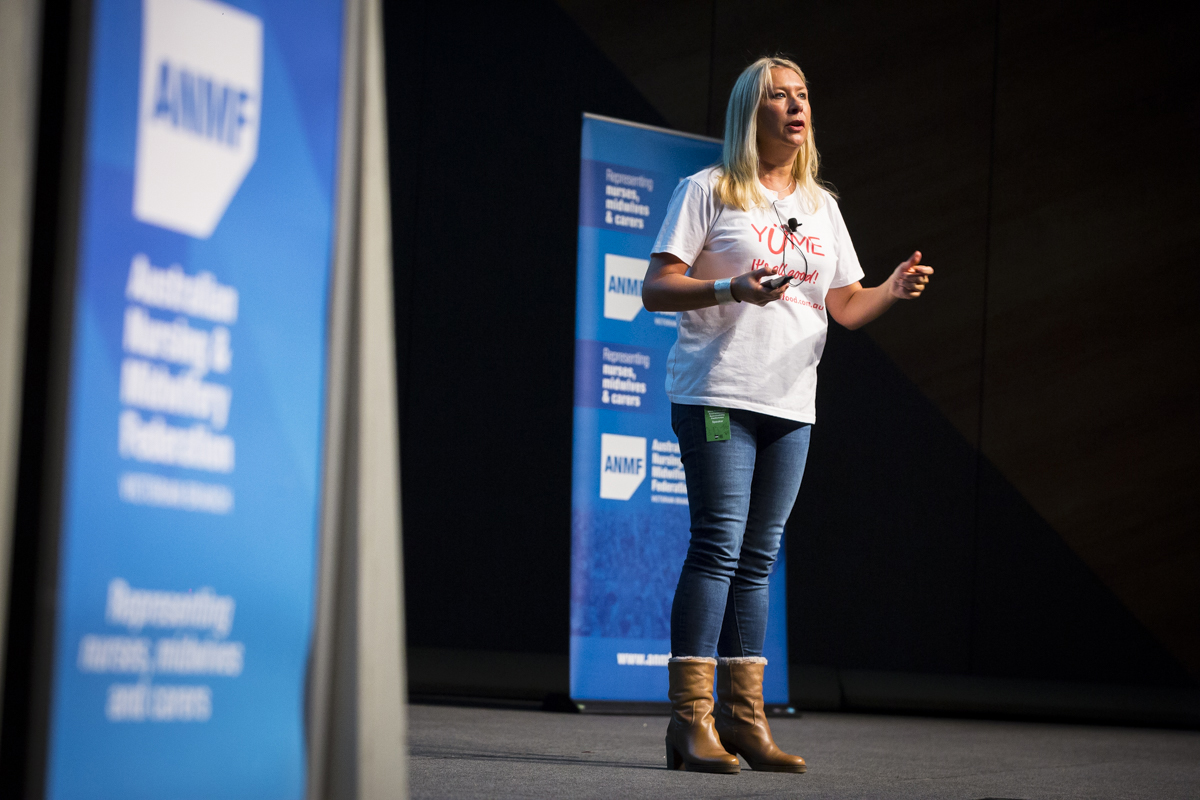
Monika Page, Melbourne Health sustainability manager. Photo: Christopher Hopkins
Monika Page has been the sustainability manager at Melbourne Health (MH) for over a decade. During her well-received presentation at the 2024 ANMF Health and Environmental Sustainability Conference, held in August, she shared many of the hospital’s recent successes in the sustainability space – along with tips for any nurses, midwives or carers seeking to replicate that success.
With more than 11,000 employees, Melbourne Health is one of Australia’s largest healthcare services and keeping track of everything that staff are doing can be a hurdle, especially when many of them still don’t even know Monika’s role exists. To address this, in 2022 Melbourne Health started a sustainability competition to showcase staff sustainability projects and initiatives. It has proved so successful that Monika is hoping to open it up to other health services from 2025.
‘In the first two years, we received 25 entries that have collectively saved over 2.3 tonnes of waste, over two and a half thousand tonnes of CO2, and more than $650,000,’ Monika told conference attendees. ‘In addition to that, it recognises and rewards staff for their efforts across the hospital.’
Success stories go viral
Among the projects she shared was one initiated by pathology NUM Justin to replace single-use tourniquets with re-usable ones. ‘Pathology was throwing away 90,000 of those little yellow tourniquets every year and Justin was sick of it,’ Monika said. So together with the procurement team, the pathology leadership team and the collection teams, he went to the supplier and said: we want a reusable tourniquet.
‘It took them a year and four different prototypes, but they’re rolling it out next month,’ Monika said. ‘And not just in pathology but across the Royal Melbourne. Now the Northern is interested. Western Health is interested. VCCC is interested. The Children’s are talking about it. So right now, between those four that are interested, that’s 400,000 tourniquets a year that will be saved from going into the bin.’

Smaller projects can be just as impactful, Monika emphasised. ‘Ward 3 West put a sustainability board up in the middle of their corridor,’ she said. They do their huddles around it, and they have all the projects they’re doing at the moment and their progress on there. It’s a really easy thing to replicate for anybody, and it works really, really well.’
Another simple project that got big results was Ward 6SE’s replacement of patient brochures with QR codes. Not long after, Monika received an email from a colleague in Western Australia asking for tips on saving paper. She sent them a photo of Ward 6SE’s project, and now it’s being replicated across WA. ‘So one little initiative can just go viral,’ she said.
Paper reduction
Speaking of reducing paper usage, this is a key target of Melbourne Health’s 2020–2025 environmental strategy. Just some of the many ways they’ve achieved their target include:
- Moving from paper-based competencies to online, saving 26 pages per staff member
- Introducing digital tools for cleaners, eliminating the need to print out each job request
- Emailing instead of faxing
- Creating an electronic template of the roster and handover diary, removing the paper-based option
- Switching to Adobe to enable saving documents in PDF instead of needing to print.
Make a business case
If you’re having trouble encouraging your colleagues or managers to help improve the sustainability footprint of your health service, Monika suggests making a business case. Her tips for this include:
- Establish a baseline: do a waste audit, or energy- or water-use audit.
- Estimate the costs/benefits of change (don’t forget to factor in your organisation’s strategic goals, reputation and staff engagement and retention).
- Compare and choose a plan of action with the best net benefits.
- Build a support network: if you don’t know where to start, join ANMF’s Green Nurses and Midwives Facebook page
- Use available resources, including ANMF’s health and sustainability resource page
Don’t forget legislation, she said, noting a raft of recent state and federal laws. ‘Legislation is helping us: your environmental data will soon be as important as your financial data.’
Your EBA may also include clauses that outline targets the service must meet. The 2024-28 public sector EBA, for example, contains a new climate change clause (16B) that requires ‘a commitment to continuous improvement including at a local workplace level to integrate environmental considerations into decision-making’.
The key message, Monika said, is that ‘this is not just a sustainability issue, it’s a cost issue’. If becoming more sustainable saves your health service money, that’s a win win for everyone.

Monika Page speaking during a panel discussion at the 2024 ANMF (Vic Branch) Health and Environmental Sustainability Conference. Photo: Christopher Hopkins




